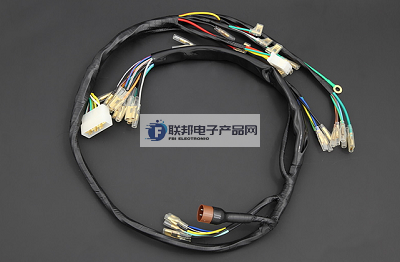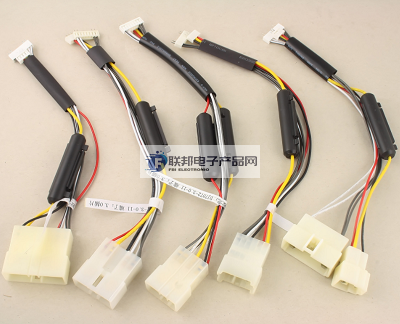Categorization:Product Information
Harness processing is a both precise and complex work, in order to ensure the quality of wire harness products, wire harness processing process generally need to be standardized and standardized. Usually, the process of wire harness processing can be divided into the following steps:

1、Feeding wire feeding equipment: put the required processing wire to the transit feeding frame. Required equipment: wire feed frame, wire feeder. Process requirements: pay attention not to scratch the surface of the wire. Avoid multiple wire processing at the same time, the wire tension is not the same. 2, cutting cutting line: the use of wire cutting machine will cut the wire to the required length. Required equipment: computerized wire cutting machine, multi-function wire cutting machine, wire cutting and stripping machine. Process requirements: not allowed to cut the surface of the wire; not allowed to cut the copper wire; peeling length error is not allowed to exceed ± 1mm. 3, peeling wire peeling: according to SOP requirements to peel off the corresponding length of the wire at the joints of the insulation outside. Required equipment: cut wire stripping machine, vertical stripping machine, pneumatic stripping machine. Process requirements: no surface crush; peeling length error is not allowed to exceed ± 1mm. 4, twisted line twisted line: the conductor of the joints to organize, twisted line. Required equipment: cutting line stripping and twisting machine, cutting line twisting machine. Process requirements: not allowed to scratch the surface of the wire; must be twisted copper wire, not allowed to appear loose wire. 5, crimp terminals riveted terminals: the joints at the conductor and the plug terminal riveting. Required equipment: terminal machine, single and double head terminal machine, automatic terminal machine, copper tape machine, mute terminal machine. Process requirements: the terminal is not deformed and must meet the requirements of tension, riveting height, width. 6, dip tin tin: tin on the joints to facilitate the insertion of circuit boards. Required equipment: automatic tin machine, single and double head tin machine, cutting line tin machine. Process requirements: tin evenly, not allowed to not appear loose wire, tin depth in line with the requirements. 7, assembly: assembly of plastic plug shell. Required equipment: electric screwdriver. Requirements: screws are not allowed to expose the surface of the plastic shell; must meet the product requirements of the torque. 8, conductivity test: the use of instruments for the conductivity of the harness test. (1) under the material under the material is the original line (usually coiled line, there are barrel line) in accordance with the process requirements, cut off and peeled. Under the material in the material at the time, it should be noted that the deviation is generally adjusted to +10 or so, there can be no negative deviation. The discharging machine should be debugged or repaired in time if there is any instability in the discharging situation. The underfeeding machine generally has a fan for heat exhaust, if the temperature of the discharge is abnormally high, the machine should be turned off and then checked. The knives of the downcomer should be replaced in time after long time use and wear. Under the material in the material, should be labeled, labeling should be neat and clear handwriting, labeling content, including the use of the product model, the length of the original line, the length of the two ends of the peeling and other information. Under the finished material should be in accordance with the original line area of the location of the provisions of the separate categories placed in good. 2) sub-sub-assembling (pre-assembly) sub-sub-assembly is to prepare for crimping, usually including the process of: wearing silicone tubes, wear back to pull the plug as well as wearing a waterproof plugs and three-core wire and two-core wire peeling. Some larger terminals, if you need to pass through a small silicone tube (such as Φ6 diameter silicone tube), you must first wear a good silicone tube in the subassembly, after crimping the terminal, and then cause the silicone tube will be too large for the terminal and can not be pulled. Pull-back terminals, such as 1216 2190 and some other plugs, you must first thread the wire into the plug, and then to be pressed terminals. At this point, do sub-assembly process should be particularly careful, requiring technicians to be very understanding of the plug and terminal. Sub-assembling also pay special attention to is if the process requires the three-core wire cut or wrapped with PVC full, must be operated in accordance with the process, because some of the three-core wire insulation skin layer with a conductive material, if not cut or not to protect, it is easy to lead to leakage or touch the fire, resulting in the consequences of a very serious. 3) crimp crimp is the use of crimping machines and other mechanical equipment will be the terminals and the original line pressure Together, so that it can play a role in connecting a way. Summarize: The above describes the entire product production process, for the actual production plant, may be different. However, in terms of the entire process flow, or similar.

2, on the federal electronic products network platform related to the introduction and sales of products brief: federal electronic products network - a professional agent / production / sales of all kinds of [connectors | wiring harness | wire and cable products]; if you have a related [connectors | wiring harness | wire and cable products] purchasing / sourcing needs or would like to buy / to understand which connectors | wiring harness | wire and cable products we can provide solutions, please contact our business staff below; If you have related [connectors | wire harness | wire and cable products] sales / resources and promotion needs, please click on the "¡¡ Business Cooperation ←" to discuss with a person!